“How the President is Taught Jiu Jitsu”
This marvelous article, which appeared in the New York World on March 20, 1902, describes President Theodore Roosevelt’s training in Jiu Jitsu under Professor John J. O’Brien of Boston. Roosevelt had grown up in New York City, served as its Police Commissioner, and was elected New York State Governor before ascending to the Presidency. Regarding Roosevelt’s Jiu Jitsu instructor, the article notes,
“Prof. O’Brien learned the Jiu Jitsu tricks in Nagasaki, Japan, where he was formerly an inspector of police. He has holds which can be used in all circumstances under which a man may be attacked.”
According to the World, Roosevelt “hopes soon to be able to break the arms, legs or neck of any Anarchist or thug who may assail him.”
The article also notes that O’Brien “and Mr. Roosevelt spend considerable time on the mat wrestling, by which exercise the President hopes to reduce his weight.”
According to a book written by O’Brien in 1905, he had served as Police Inspector in Japan for ten years, and had received a “Jiu-Jitsu Diploma” from the Governor of Nagasaki.
In subsequent years, the President would continue his Jiu Jitsu training under more notable instructors–that is, from the source itself–the Japanese. Roosevelt’s letters to his children contain numerous references to his training, which was largely imparted by Professor Yoshitsugu Yamashita, the first person to have been awarded 10th degree red belt rank in Kodokan judo. According to Yamashita, the lessons he imparted to Roosevelt occurred at the White House “three times a week for three years.” Yamashita, quoted in the September 27, 1914 New York Sun, also noted that Roosevelt “was his best pupil; that, however, he was very heavy and impetuous, and it had cost the poor professor many bruisings, much worry and infinite pains during Theodore’s rushes to avoid laming the President of the United States.”
Following are excerpts from Roosevelt’s letters to his children that mention Jiu Jitsu:
White House, Jan. 14, 1905.
DEAR STURGIS:
Last year, when I had Professor Yamashita teach me the “Jiudo”—as they seem now to call Jiu Jitsu—the naval attache here, Commander Takashita, used to come around here and bring a young lad, Kitgaki, who is now entering Annapolis. I used to wrestle with them both. They were very fond of Archie and were very good to him. This Christmas Kitgaki sent from Annapolis a little present to Archie, who wrote to thank him, and Kitgaki sent him a letter back that we like so much that I thought you might enjoy it, as it shows so nice a trait in the Japanese character. It runs as follows:
“My dearest boy:
“I received your nice letter. I thank you ever so much. I am very very glad that you have receive my small present.
“I like you very very much. When I have been in Jiudo room with your father and you, your father was talking to us about the picture of the cavalry officer. In that time, I saw some expression on your face. Another remembering of you is your bravery when you sleped down from a tall chair. The two rememberings can’t leave from my head.
“I returned here last Thursday and have plenty lesson, so my work is hard, hard, hard, more than Jiudo.
“I hope your good health.
“I am,
“Sincerely yours,
“A. KITGAKI.”
Isn’t it a nice letter?
White House, Feb. 24, 1905.
Yesterday afternoon we had Professor Yamashita up here to wrestle with Grant. It was very interesting, but of course jiu jitsu and our wrestling are so far apart that it is difficult to make any comparison between them. Wrestling is simply a sport with rules almost as conventional as those of tennis, while jiu jitsu is really meant for practice in killing or disabling our adversary. In consequence, Grant did not know what to do except to put Yamashita on his back, and Yamashita was perfectly content to be on his back. Inside of a minute Yamashita had choked Grant, and inside of two minutes more he got an elbow hold on him that would have enabled him to break his arm; so that there is no question but that he could have put Grant out. So far this made it evident that the jiu jitsu man could handle the ordinary wrestler. But Grant, in the actual wrestling and throwing was about as good as the Japanese, and he was so much stronger that he evidently hurt and wore out the Japanese. With a little practice in the art I am sure that one of our big wrestlers or boxers, simply because of his greatly superior strength, would be able to kill any of those Japanese, who though very good men for their inches and pounds are altogether too small to hold their own against big, powerful, quick men who are as well trained.
“My throat is a little sore, because once when one of them had a strangle hold I also got hold of his windpipe and thought I could perhaps choke him off before he could choke me.”
White House, March 5, 1904.
DEAR KERMIT: . . . . .
I am wrestling with two Japanese wrestlers three times a week. I am not the age or the build one would think to be whirled lightly over an opponent’s head and batted down on a mattress without damage. But they are so skilful that I have not been hurt at all. My throat is a little sore, because once when one of them had a strangle hold I also got hold of his windpipe and thought I could perhaps choke him off before he could choke me. However, he got ahead.
“I have made good progress, and since you left they have taught me three new throws that are perfect corkers.”
White House, April 9, 1904.
DEAR TED:
I am very glad I have been doing this Japanese wrestling, but when I am through with it this time I am not at all sure I shall ever try it again while I am so busy with other work as I am now. Often by the time I get to five o’clock in the afternoon I will be feeling like a stewed owl, after an eight hours’ grapple with Senators, Congressmen, etc.; then I find the wrestling a trifle too vehement for mere rest. My right ankle and my left wrist and one thumb and both great toes are swollen sufficiently to more or less impair their usefulness, and I am well mottled with bruises elsewhere. Still I have made good progress, and since you left they have taught me three new throws that are perfect corkers.
Much of the New York World article’s text is faded and difficult to read, but can be accessed in full by clicking on the image below:
To learn about Roosevelt’s earlier martial training in Catch and Cornish wrestling, read our earlier post here.
And if you enjoyed this article, you might also be interested in A New Yorker visits Jigoro Kano’s Academy in Tokyo, 1914
Trackbacks & Pingbacks
- Theodore Roosevelt trains in Catch and Cornish Wrestling as N.Y. Governor | Martial Arts New York
- Boxing Versus Wrestling: Proposal for an Early MMA Contest, 1922 | Martial Arts New York
- Earliest American report of Karate, 1899 | Martial Arts New York
- A New Yorker visits Jigoro Kano’s Academy in Tokyo, 1914 | Martial Arts New York

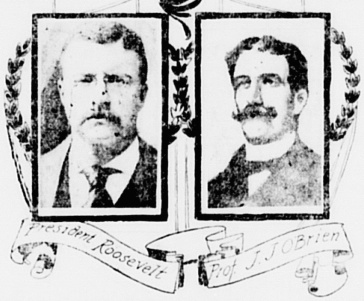

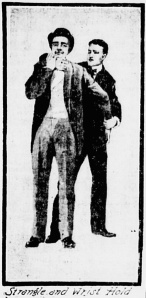

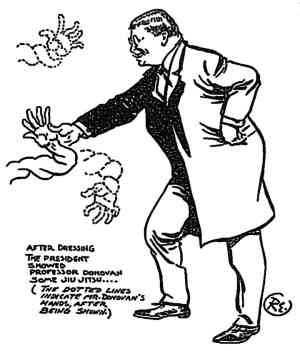
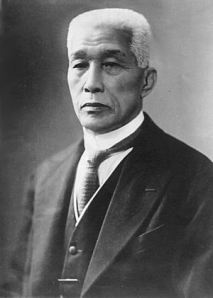
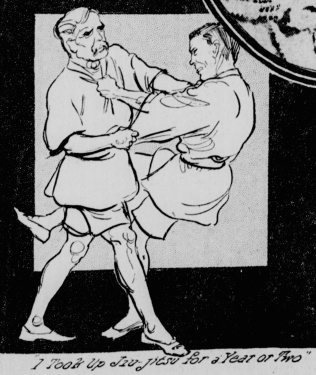
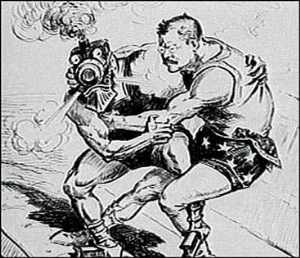
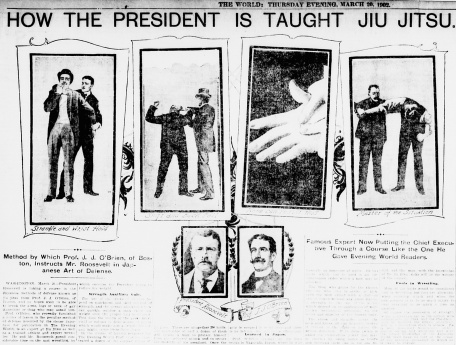
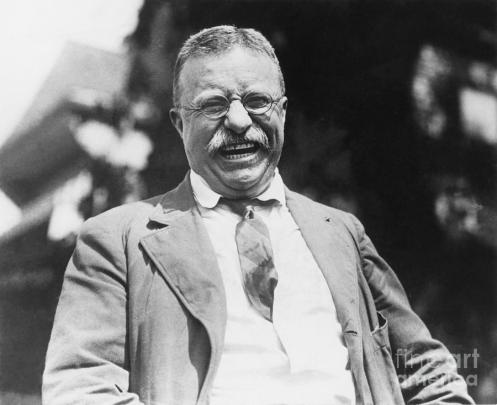

Great Historical articles of Facts. Thanks for sharing, and I will do the same
LikeLike